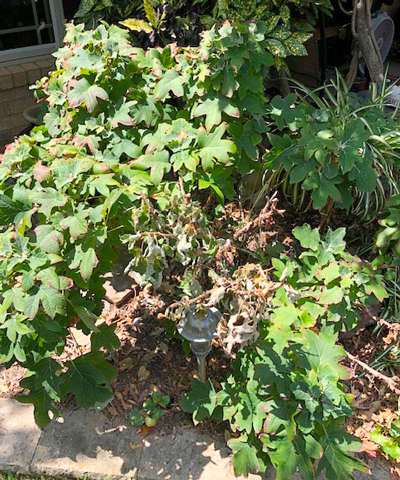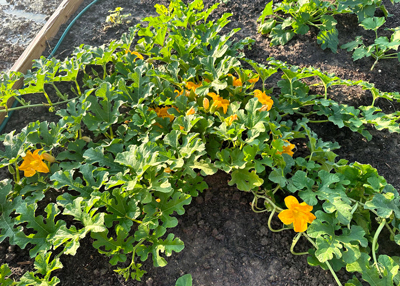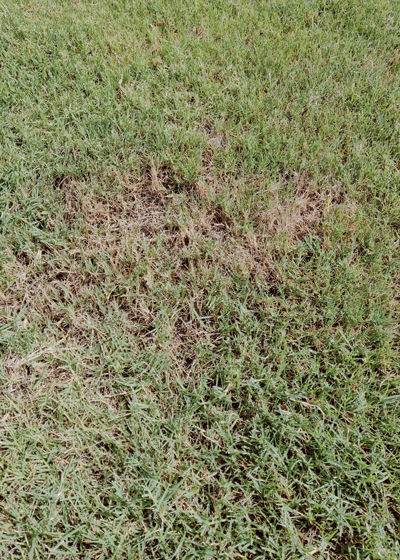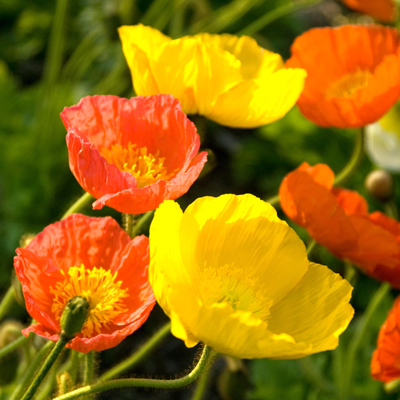Q&A – Ask Neil: September 7, 2023
(Please read these instructions carefully.)
Before you post your question, please look at recent issues to see if someone else has already asked it. You might find your answer there.
How to submit your question…
(Note: You may need to allow a pop-up window to come up in order to get the link for sending your photo(s). If you have already submitted your question and didn’t see the pop-up window, please click here.)
• Click the link provided below to post your question. After you submit your question, a new window will pop up giving you the address to which you can e-mail a SHARP, HIGH-RESOLUTION PHOTO to accompany your question. Please DO NOT SEND THUMBNAIL PHOTOS in case I need to zoom in to see things.
• Click here to post your question.
• Please ONLY POST YOUR QUESTION ONE TIME. We can only accept a set number of questions each week, and when we get duplicates it costs other people their chances.
• One question per reader, please.
• Please use this only for posting questions – not for standard emails.
• Watch for your answer in the following week’s e-gardens.
• I choose those of greatest general interest. For example, plant IDs seldom make the cut.
• I must have your first name or initials.
• I must have your city or county. (Texas is a very large state.)
QUESTION 1
WHAT IS WRONG WITH MY OAKLEAF HYDRANGEA?
Question: We have had this oakleaf hydrangea for many years. It has been slowly showing this dieback. Due to some limb loss it now gets four hours of sunlight. We’ve treated for grubs and fungus and still have the issue. Any suggestions? Clyde S., Euless.

Answer: I can’t imagine white grub worms bothering an oakleaf hydrangea in this way. Unless you have seen a large number of them in the soil on this side of the plant over last winter and very early spring, I don’t think much is to be gained by treating for them.
The limb loss could be contributing since this plant does best in shade, especially afternoon shade.
I have 15 or 18 oakleaf hydrangeas in our home landscape and have never seen any fungal diseases bother them except for cotton root rot, and I don’t see that in this photo. CRR attacks the entire plant by killing its root system quickly.
I’ll go ahead and nibble. Is that light fixture I see incandescent? Is it still functional? Is there any chance it might have overheated and burned the foliage on the really warm summer nights?
Whatever the cause, I would trim the dead wood out and reshape the plant as needed. Hopefully it will regrow and fill back in again come spring.
QUESTION 2
WILL MY PUMPKIN MAKE FRUIT BY HALLOWEEN?
Question: I have one pumpkin plant. It is thriving, but I’m only getting male flowers. I do get female flowers, but they shrivel up before they can produce fruit. Is this due to heat? Is there anything I can do to get the plants to produce this fall? Katie H., Aledo, Parker County.

Answer: It’s going to be really tight at best. Wish I knew when you planted it. July 1 is the proper time for Parker County in North Central Texas, and you always want to plant small to mid-sized varieties. Larger ones take too long to mature. As you mentioned, you’ll get a couple of weeks of male flowers (straight stems) before any female flowers show up. That’s nature’s way of ensuring pollination can happen. It sounds like you might not have had good bee activity. That’s not uncommon, especially late in the summer when so few plants are blooming in nature. When that happens, the female flowers will shrivel up and abort soon after they close. You can play the part of the bees by plucking off a male flower, peeling of its petals and daubing the pollen onto the sticky female flowers. Do so early in the day before heat dries up the pollen. You should see good fruit set within a week or so. (Pumpkin pies are great for Thanksgiving, too!)
QUESTION 3
SHOULD I PRUNE MY POMEGRANATE BUSH?
Question: I planted a pomegranate bush this spring. It has done well, but it has shoots growing everywhere, some even with flowers. Should I trim it? When and by how much? Randy R, Kilgore.

Answer: Your plant looks like it has grown in a good bit of shade. It is stretched and lanky. I would probably take the growing tips (4-5 inches) off the longer shoots in mid-February before it starts to leaf out. If it is, indeed, in shade, consider moving it out into full sun. It looks like you might have the dwarf variety ‘Chico.’ It’s a handsome little plant that bears small, inedible fruit. If you bought a named fruiting variety, forgive me. I really can’t see it all that well.
QUESTION 4
HOW CAN I ELIMINATE NUTSEDGE FROM MY LAWN? WILL MAKING MY ST. AUGUSTINE STRONGER HELP GET RID OF THE WEED?
Question: I have nutsedge all through my St. Augustine lawn. What can I do to eliminate it? Will making the St. Augustine stronger help get rid of it? Olga O-G, Dallas.

Answer: Nutsedge is one of two common weeds that can actually overtake the healthiest of St. Augustine turf (other being dallisgrass). The original Image product came into the market 30-ish years ago as a way to control nutsedge without harming your permanent lawngrass. I’ve used it with very good success several times, as have hundreds of thousands of other people. You apply it with a spray apparatus or sprinkling can, then water the treated area heavily. It needs two applications 30 days apart, with both of them falling between May 15 and September 15 – so it’s too late to treat for this year. Just be sure you get the original Image labeled for control of nutsedge. You’re in Dallas. Our advertisers at Calloways will be able to help you.
QUESTION 5
WHAT IS THE OPTIMAL TIME TO SOW LARKSPUR SEEDS FOR SPRING BLOOMS? DO YOU HAVE A RECOMMENDED SOURCE?
Question: When is the optimal time to sow larkspur seeds for spring blooms? Can you suggest a good source? Martha S., Haltom City.
Answer: There’s a lot of confusion and botanical crossover between the genera Delphinium (perennials) and Consolida (annuals), but our heirloom reseeding larkspurs are generally put into the species Consolida ajacis by plant taxonomists.
In older neighborhoods and recreated cottage gardens you’ll see them mixed in with reseeding petunias, old-fashioned daylilies, jonquils, white flag iris, St. Joseph’s lilies, antique roses, and other plants our great-grandmothers passed along from generation to generation. Frankly, if you can find someone who is willing to share seeds with you very early next summer, that would be a great way to get your start.
However, if you want to buy seeds, I found dozens of matches simply by Googling “buy seeds Consolida ajacis.” I suggest you read their descriptions carefully to be sure you will be getting just what you are expecting. These are grown all over the world, so don’t be put off if the source isn’t from somewhere right down the street from you. For example, here’s a good sheet of information from a respected and long-standing seed source clear up in Maine. Once you navigate through their references to Zone 5, it’s easy to see that your prime time for planting in Texas would be mid-fall.
For what it’s worth, genetics being what they are, blues and purples predominate. If you want pinks and whites, be sure to save seeds from those and scatter them evenly through your flowerbed.
Good luck! They’re great plants!
QUESTION 6
WHY DO I HAVE SEVERAL SPOTS OF MY BERMUDA SHOWING BROWN IN SPITE OF MY WATERING 30 MINUTES TWICE A WEEK?
Question: I have a bermuda lawn that I water twice a week for 30 minutes per time. I don’t understand why several spots turn brown as if they are dry. What am I doing wrong? What can I do to fix it? Chia Liao, Little Elm.

Answer: I must admit that I really can’t see the grass well enough to give you a for-certain answer. It all looks rather dry. It also looks like it might need to be cut one notch lower, then fed with an all-nitrogen fertilizer with 30-40 percent of that nitrogen in slow-release form. Follow that up with a deep watering. Hopefully that would be enough to propel some vigorous growth yet this fall.
The only other thing that crossed my mind was bermuda mites. You won’t actually see the mites, but they will attack the grass and leave it looking about the same as your description. The stems, if mites are involved, will be very shortened and clubby. See this information and photos from Clemson University.
QUESTION 7
WILL PURPLE WINTERCREEPER EUONYMUS GROW UP THE TRUNKS OF TREES AND OTHER SHRUBS?
Question: We are redoing our front landscape bed (keeping the crape myrtle). We are thinking about planting purple wintercreeper in parts. Do we need to worry about it growing up and onto the crape myrtle, the house or other shrubs? How do we best contain it? Kevin A., Van Alstyne.

Answer: I have several very large beds of purple wintercreeper that I’ve been maintaining around our house and beneath trees and around shrubs for 30 to 35 years, so I can speak with good experience. Yes, it will try to climb trunks and masonry walls and will intermingle with low shrubs. But so does Asian jasmine. I would estimate that I have spent cumulatively probably 5 or 10 minutes per year keeping it out of my shrubs and off my trees’ trunks and house. In other words, it is not a problem. Great groundcover!
QUESTION 8
CAN I SOW ICELAND POPPY SEEDS DIRECTLY INTO MY GARDEN?
Question: I have a packet of Iceland poppy seeds. I have seen your recommendation of planting transplants into the garden in late winter, but can I sow the seeds directly into my garden like I do my other poppies in the fall? If so, what month? Russell, Weatherford.

Answer: (Russell called my KLIF radio program last Saturday. I confessed that I had not tried this. I told him that I would do a bit of research to see what I could find from credible sources.)
I read through 10 or 12 websites and all recommended growing your Iceland poppies as small potted transplants rather than sowing them directly into the garden. That would allow you to start them in mid-winter indoors in the bright light conditions the seeds and seedlings require. The tender little seedlings would be too vulnerable to the possibly extreme cold Weatherford could face in January and early February.
